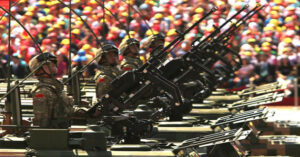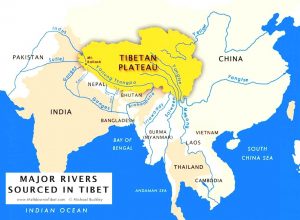
Photo : Stephen Shaver/UPI
China has deployed unspecified numbers of its latest tank, the Xinqingtan, in an area of Tibet near the Indian border. The move continues a large-scale build up of Chinese military material along the *Line of Actual Control (LAC) with India in recent years.
Chinese state media praised the Xinqingtan as being far more advanced than the Russia made T-90S deployed by India. In reality, however, the T-90S is a much bigger main battle tank that boasts a 125mm smoothbore gun that far outranges the 105mm gun on the Xinqingtan. The T-90S also has armour that is thicker and superior.
The benefits of the Xinqingtan are in its lightweight and its powerful diesel engine, both factors that make it ideally suited for fighting in oxygen-deficit, high altitude environments like the LAC.
China’s increased military presence in Tibet makes sense from various perspectives.
Tibet is known as ‘Xizang’ in Mandarin. Xizang means “western storehouse” or “western treasure house.” Tibet’s Yulong copper mine is the biggest copper deposit in China. Virtually all electrical wiring, save for overhead power lines, are formed with copper. Electrical applications, including computer technology, televisions, mobile telephones and portable electronic devices are major consumers of copper. In addition, Tibet is home to vast quantities of iron, zinc, lead and cadmium and geologists suggest that the area has enormous untapped reserves of crude oil and natural gas.
 Tibet has also been called “Asia’s Water Tower” because its glaciers feed many of Asia’s great rivers, including the Yangtze, the Brahmaputra and the Mekong. Jean-Louis Chaussade, the chief executive of French utility Suez, told the Financial Times in March that water would soon be a more valuable commodity than oil and that by 2035 some 40% of the worlds population would live in areas facing water scarcity. With water scarcity set to become a global problem in the coming decades control of Tibet’s huge natural supply is of great strategic importance.
Tibet has also been called “Asia’s Water Tower” because its glaciers feed many of Asia’s great rivers, including the Yangtze, the Brahmaputra and the Mekong. Jean-Louis Chaussade, the chief executive of French utility Suez, told the Financial Times in March that water would soon be a more valuable commodity than oil and that by 2035 some 40% of the worlds population would live in areas facing water scarcity. With water scarcity set to become a global problem in the coming decades control of Tibet’s huge natural supply is of great strategic importance.
The water and mineral reserves of the Tibetan plateau make China’s military presence there the equivalent of a dragon lying on top of its treasure hoard. But even without its wealth of resources Tibet would still have great value to China from an economic and military perspective.
From a strategic defence planning perspective Tibet provides a massive buffer for the Chinese against India. Control of Tibet brings Chinese military forces within 500 kilometres of key Indian industrial and population centres. In contrast China’s industrial East coast is 3000 kilometres from anywhere in India. Chinese offensive weapons and missiles could therefore hit their potential targets in India much faster than India could strike at anything on China’s eastern seaboard. Due to this proximity the Chinese could also hit India with much smaller and cheaper missiles than the Indians would require to hit Beijing or Shanghai.
The Tibetan plateau also provides the obvious military benefit of being the high ground, a massive advantage in conventional warfare. Historian Tsering Shakya has written that the acquisition of Tibet was “vital to Chinese strategic calculations for the simple reason that the Himalayas presented by far the best vantage point for China’s offensive or defensive needs.”
From an economic perspective, Tibet is due to play a large part in Xi Jinpings signature One Belt, One Road initiative. Tibet has borders with India, Nepal, Myanmar and Bhutan and is therefore a potentially vital economic thoroughfare. By integrating Tibet into this project the Chinese government aims to bring some prosperity to the area and more importantly, the corollary of prosperity, stability. The Chinese government will be hoping that an increased military presence in the area will suppress any protests against the development projects associated with the One Belt, One Road.
Finally, in reference to the deployment of the Xinqintan, China is the third largest arms exporter in the world, behind the United States and Russia. Pakistan, Bangladesh and Myanmar are the main recipients of Chinese military exports. Retired colonel Yue Gang said “Chinese weapons are well-known for their excellent quality and low price.” Given this push to sell arms abroad the Chinese will be aware that if they didn’t deploy their new weaponry on their own borders then potential customers would look askance at their unwillingness to use their own military products.
*Line of Actual Control (LAC): The border between India and Tibet has been a source of diplomatic tension between China and India for over a century. In 1914, the British signed the Simla accords with the Tibetans, creating the McMahon Line as the boundary between India and Tibet which has become the de facto border, referred to as the Line of Actual Control. The accords were rejected by the Chinese government at the time but today this line still acts as the border between China and India. The current Chinese administration considers the McMahon Line to be an illegal incursion into Chinese territory.




 Print
Print Email
Email